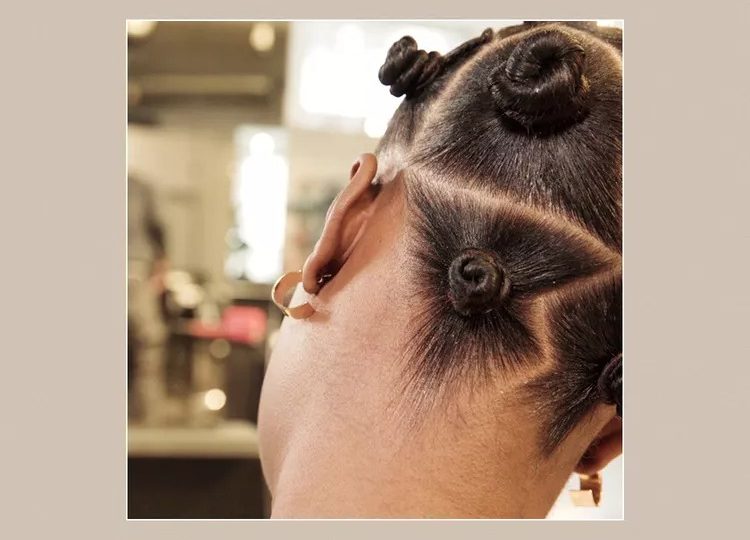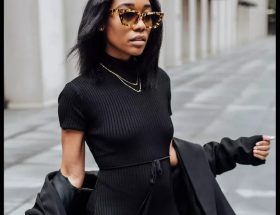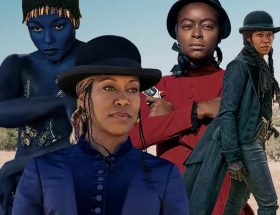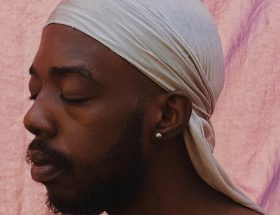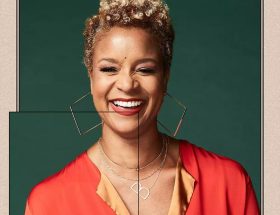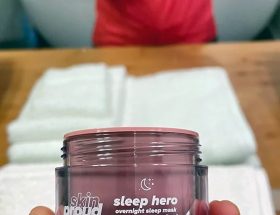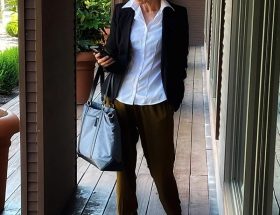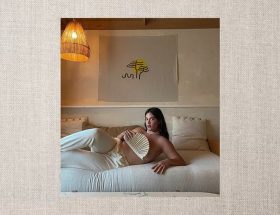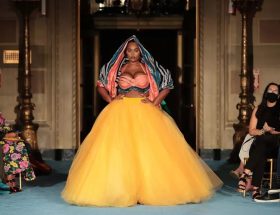The History Of Bantu Knots Is Important To Know
when we think of natural hairstyles with rich history and lasting popularity, Bantu knots always come to mind. Bantu knots are cool, convenient, and culturally significant, like cornrows, twists, and other natural hairstyles. You may have tried the sleek, geometric look on your own or seen it on your favorite celebs (like Rihanna or Lupita N’yongo.) Still, Bantu knots have been around for centuries. In the latest installation of Crowned, Star Donaldson, Byrdie’s senior social media editor, explores the history and process of the look.
Though you may notice Bantu knots over Instagram or on your favorite celebrities, the style isn’t new by any means. The neatly separated twists date back to the Zulu Kingdom in Africa, where they held great meaning. “Bantu knots originate from the Zulu Kingdom of Southern Africa where the curls and coils of Black hair are said to resemble shapes in the cosmos,” Donaldson says. “When the Dutch colonized Southern Africa, they used the word Bantu as a derogatory term to marginalize southern Africans.”1
Eventually, South Africans reclaimed the Zulu word Bantu, which translates to people. In many African regions, hair is considered powerful, and it is believed to have unique spiritual energy due to its proximity to the heavens. Because of this, raised styles like Bantu knots are considered sacred.
The technology of Bantu knots is straightforward and allows for a lot of creativity. Donaldson breaks it down: “The style involves parting hair into sections, twisting the sections, and wrapping the twists around themselves to create neatly separated buns or knots,” she explains.
You can achieve Bantu knots on straight, wet, or stretched hair—the choice is yours. You start by creating sections throughout your hair, and you can use elastic rubberbands to secure each area, which is especially helpful if you’re new to Bantu knots. To create sleek parts, you can comb through your favorite styling cream or gel before securing your parts. We prefer a small amount of edge control to keep flyaways at bay. You can get creative with the parting step by freehanding abstract lines or adding in tiny accent braids (as seen on our model.)
The size of your sections is up to you. If your hair is longer, you may prefer larger sections. At the same time, shorter hair might sway to smaller areas. Once your parts are secured, you twist your hair in one direction from base to end. Then, you wrap the hair around itself to create a knot-like shape. Finally, you can secure the ends with a good tuck, hairpin, or rubber band.
Bantu knots are classified as a protective style as it hides the ends of your hair, ultimately preventing or reducing breakage and moisture loss. The best part is, Bantu knots are super versatile, so if you’re itching to take down your knots, you can unravel them to reveal tousled curls, otherwise known as a Bantu knot-out.
While Bantu knots are a simple and common styling technique, they have a politicized Western context. Given the powerful African history of the look, Bantu knots are also a symbol of pro-Blackness and self-love, and like many Black historical styles, societal standards create room for criticism, misinterpretation, and appropriation.
The style has been misplaced on white models and non-Black celebrities, and nicknamed and marked as “trendy,” which discredits its important history and purpose. In 2016, Valentino revealed a campaign featuring the hairstyle on primarily white models. That same year, Khloe Kardashian posted a since-deleted image of her wearing Bantu knots, improperly captioned “Bantu babe.” Last year, Adele sparked debate after posting a photo in Bantu knots to her Instagram. She recently addressed her choice to leave the controversial post on her page. “If I take it down, it’s me acting like it never happened,” the singer told British Vogue. “And it did. I totally get why people felt like it was appropriating.”
Currently, Bantu knots are included in styles mentioned in The CROWN Act, a bill that aims to end hair discrimination. According to the law, the CROWN Act prohibits race-based hair discrimination, which denies employment and educational opportunities because of hair texture or protective hairstyles, including braids, locs, twists, or Bantu knots. The CROWN Act is currently passed in seven states.
Bantu knots being part of the styles protected by The CROWN Act speaks volumes to its importance in Black culture. And while Bantu knots are a cool, easy way to wear your hair, it’s a style that should also be celebrated and respected.
